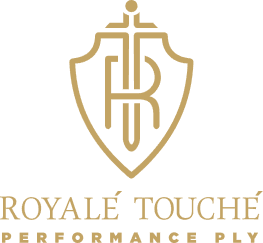

Fire-resistant plywood: Things you should know

March 20, 2024
In the realm of construction and woodworking, safety is paramount. When it comes to building structures that need an extra layer of protection against fire, fire-resistant plywood emerges as a crucial material. In this article, we'll explore the key aspects of fire-resistant plywood, shedding light on what you should know to make informed decisions about incorporating this resilient material into your projects.
Understanding Fire-Resistant Plywood
Fire-resistant plywood
is engineered to withstand the damaging effects of fire for a longer duration compared to conventional plywood. This is achieved through the incorporation of special additives or treatments during the manufacturing process, enhancing the plywood's ability to resist ignition and slow down the spread of flames.
Fire Ratings and Standards
Fire proof plywood:
plywood is classified based on fire ratings, which indicate the duration the material can withstand fire exposure. Common ratings include 30 minutes, 60 minutes, 90 minutes, and 120 minutes. Understanding these ratings is crucial for choosing the right fire-resistant plywood for your specific application, whether it's for residential, commercial, or industrial use.Construction and Composition:
Fire-resistant plywood is often constructed with a combination of treated wood veneers and fire-retardant chemicals. The treatment process involves impregnating the wood with substances that resist combustion. This ensures that, even in the event of a fire, fire proof plywood contributes to slowing down the spread of flames, providing valuable time for evacuation or intervention.
Applications of Fire-Resistant Plywood:
The versatility of fire-resistant plywood makes it suitable for various applications. It is commonly used in the construction of fire-rated doors, partitions, roofing, and sheathing. Additionally, it can be employed in furniture and other interior elements where an added layer of fire protection is desired.
Code Compliance and Certification:
Compliance with local building codes and regulations is paramount when using fire-resistant plywood. Ensure that the product you choose meets or exceeds the required standards for fire resistance in your region. Look for certifications such as UL (Underwriters Laboratories) or other relevant standards to guarantee the material's performance under fire conditions.
Maintenance and Durability:
Fire-resistant plywood, like any other building material, requires proper maintenance to preserve its fire-resistant properties. Regular inspections and prompt replacement of damaged sections are essential to ensure ongoing protection. Additionally, understanding the plywood's durability in non-fire conditions is crucial for making informed decisions about its long-term performance.
Cost Considerations:
While fire-resistant plywood offers enhanced safety, it's essential to consider the fire resistant plywood price. This specialized material may be more expensive than regular plywood, but the investment in fire protection can be invaluable in safeguarding lives and property.
is engineered to withstand the damaging effects of fire for a longer duration compared to conventional plywood. This is achieved through the incorporation of special additives or treatments during the manufacturing process, enhancing the plywood's ability to resist ignition and slow down the spread of flames.
Conclusion
Fire-resistant plywood is a critical component in creating structures that prioritize safety in the face of fire emergencies. Understanding its classifications, construction, applications, code compliance, maintenance requirements, and cost considerations empowers builders, architects, and homeowners to make informed choices. By incorporating fire-resistant plywood into your projects, you not only enhance fire safety but also contribute to the overall resilience of your built environment.
